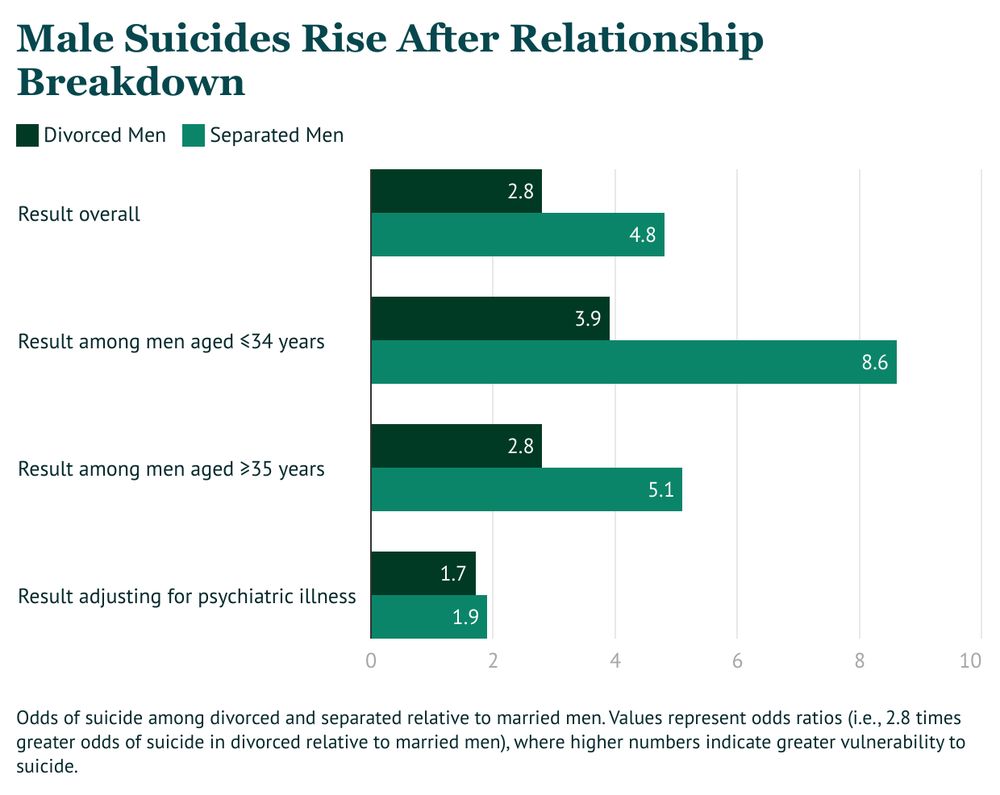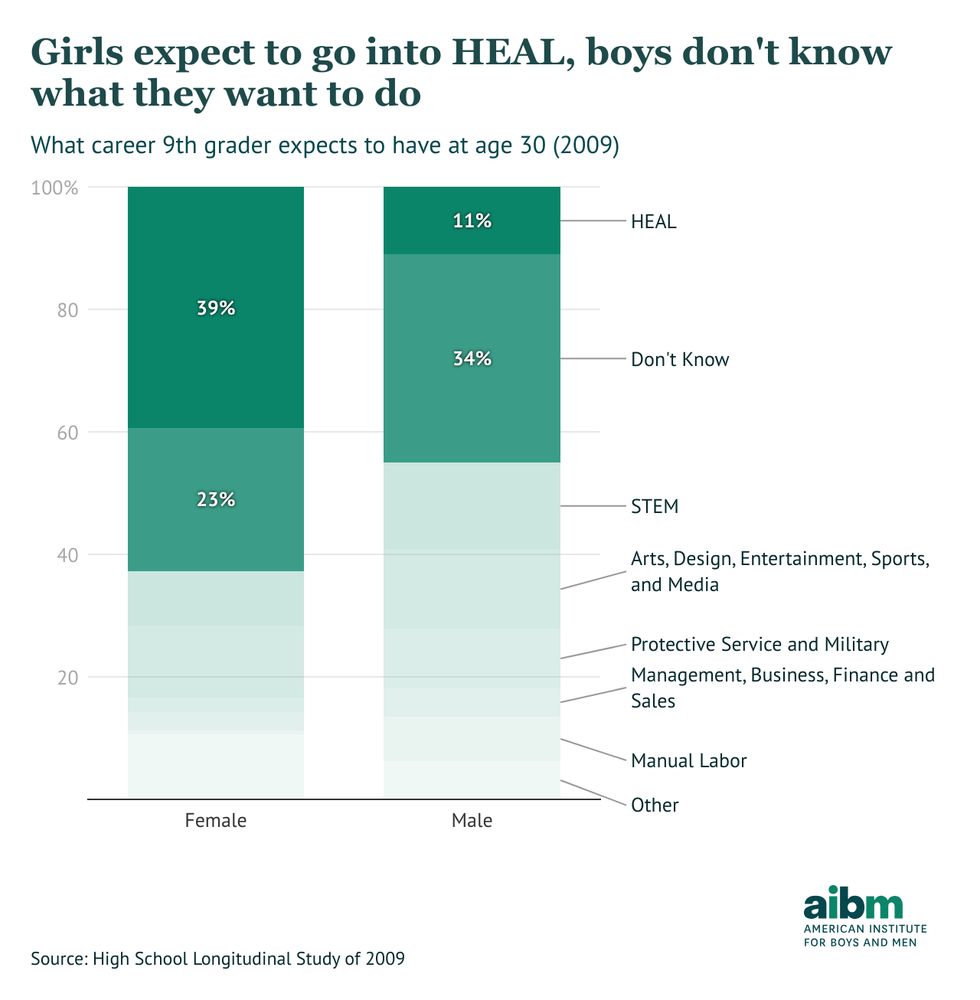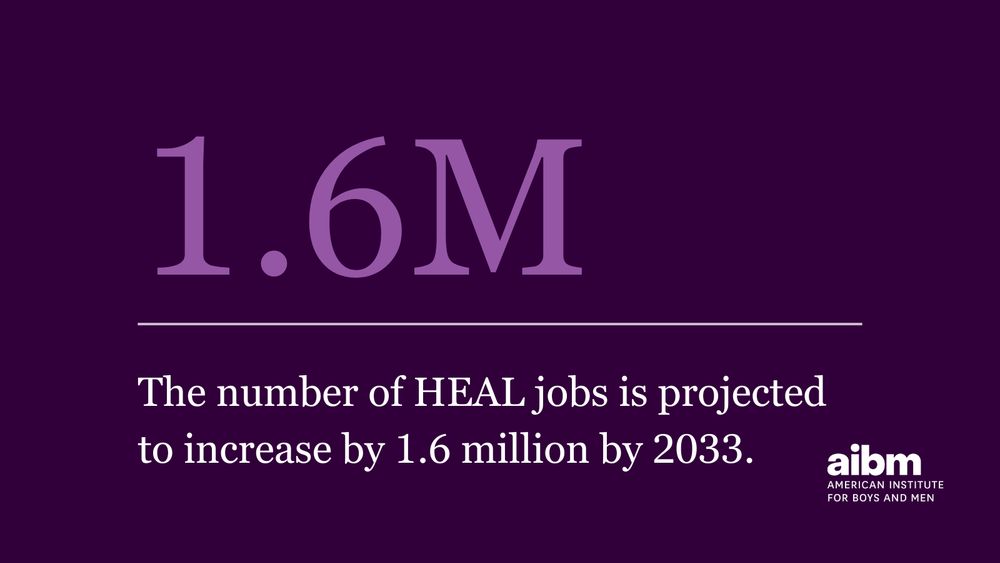The American Institute for Boys and Men conducts non-partisan research on issues that affect the well-being of boys and men across the United States.
Read more: www.rand.org/pubs/perspec...

Read more: www.rand.org/pubs/perspec...
Separation and relationship loss are associated with elevated suicide risk, particularly for men in midlife.

Separation and relationship loss are associated with elevated suicide risk, particularly for men in midlife.
Construction workers experience the highest suicide rates of any major group. Other high-risk fields include repair and maintenance, farming and fishing, and protective services.

Construction workers experience the highest suicide rates of any major group. Other high-risk fields include repair and maintenance, farming and fishing, and protective services.
The gap is growing. Suicide rates have risen 53 percent for men without a degree, compared to 26 percent for those with one.

The gap is growing. Suicide rates have risen 53 percent for men without a degree, compared to 26 percent for those with one.
But risk is not evenly distributed. It varies significantly by age, educational attainment, occupation, and life experience.

But risk is not evenly distributed. It varies significantly by age, educational attainment, occupation, and life experience.
Our researchers find that the trends aren’t too different. However, there are concerning divides among those with college degrees and those without.
Read the full brief: aibm.org/research/mal...

Our researchers find that the trends aren’t too different. However, there are concerning divides among those with college degrees and those without.
Read the full brief: aibm.org/research/mal...
This data reflects the intense emotional challenges that can follow relationship breakdown.
Learn more: aibm.org/commentary/s...

This data reflects the intense emotional challenges that can follow relationship breakdown.
Learn more: aibm.org/commentary/s...
• 78% of students expecting HEAL careers are girls
• 61% of future STEM aspirants are boys
• Manual labor and protective service jobs skew 9:1 and 4:1 male
Full breakdown here: aibm.org/research/wha...

• 78% of students expecting HEAL careers are girls
• 61% of future STEM aspirants are boys
• Manual labor and protective service jobs skew 9:1 and 4:1 male
Full breakdown here: aibm.org/research/wha...
For girls, HEAL jobs are the top choice. Boys’ interests are more spread out.
Read more: aibm.org/research/what-teens-want-to-be-gender-differences-in-careers-and-majors/

For girls, HEAL jobs are the top choice. Boys’ interests are more spread out.
Read more: aibm.org/research/what-teens-want-to-be-gender-differences-in-careers-and-majors/
@richardreeves.bsky.social joins Dr. Becky to talk fatherhood, masculinity, and getting boys and fathers the support they need.
Watch on Good Inside: youtube.com/watch?v=DEkOs55vec4
@richardreeves.bsky.social joins Dr. Becky to talk fatherhood, masculinity, and getting boys and fathers the support they need.
Watch on Good Inside: youtube.com/watch?v=DEkOs55vec4
Read more here: aibm.org/research/the-heal-economy/

Read more here: aibm.org/research/the-heal-economy/
Male teachers can play an important role in boys' development. Our analysis suggests their presence may have a positive impact.
Read the brief: aibm.org/research/missing-misters/

Male teachers can play an important role in boys' development. Our analysis suggests their presence may have a positive impact.
Read the brief: aibm.org/research/missing-misters/
Read our commentary by @richardreeves.bsky.social and Will Secker: aibm.org/commentary/a...

Read our commentary by @richardreeves.bsky.social and Will Secker: aibm.org/commentary/a...
85% of U.S. teens play video games, and 89% play with others. Boys game more often (61% daily vs. 22% of girls) and use gaming for socializing more (94% vs. 82%).

85% of U.S. teens play video games, and 89% play with others. Boys game more often (61% daily vs. 22% of girls) and use gaming for socializing more (94% vs. 82%).
@wbur.org’s On Point explores the education crisis facing boys in the new series "Falling Behind: The Miseducation of America's Boys." Featuring @richardreeves.bsky.social.
Listen to the full series. Link in the description:

@wbur.org’s On Point explores the education crisis facing boys in the new series "Falling Behind: The Miseducation of America's Boys." Featuring @richardreeves.bsky.social.
Listen to the full series. Link in the description:
In 27 states, plus Washington, D.C., homelessness increased more for men, with the largest gap in California. However, in 32 states, the growth rate of homelessness was higher for women.

In 27 states, plus Washington, D.C., homelessness increased more for men, with the largest gap in California. However, in 32 states, the growth rate of homelessness was higher for women.


California’s homeless population grew from 116,000 in 2015 to 187,000 in 2024, with 60% of the increase coming from men. Oregon saw a 73% rise, from 13,000 to nearly 23,000, also driven largely by men.

A new profile on AIBM President Richard V. Reeves explores the growing challenges facing boys and men in education, work, and mental health and why these issues demand urgent attention.
Read the full article by Eamon Whalen: thenation.com/article/society/richard-reeves-profile/

A new profile on AIBM President Richard V. Reeves explores the growing challenges facing boys and men in education, work, and mental health and why these issues demand urgent attention.
Read the full article by Eamon Whalen: thenation.com/article/society/richard-reeves-profile/
Since the pandemic, an additional 107,000 #men and 79,000 #women have become homeless. This represents a 30 percent increase for men and a 35 percent increase for women.

Since the pandemic, an additional 107,000 #men and 79,000 #women have become homeless. This represents a 30 percent increase for men and a 35 percent increase for women.

• Competing time with screens
• Cost barriers preventing more boys from playing
• “No pass, no play” academic policies, which especially impact boys
• Post-pandemic effects

• Competing time with screens
• Cost barriers preventing more boys from playing
• “No pass, no play” academic policies, which especially impact boys
• Post-pandemic effects



